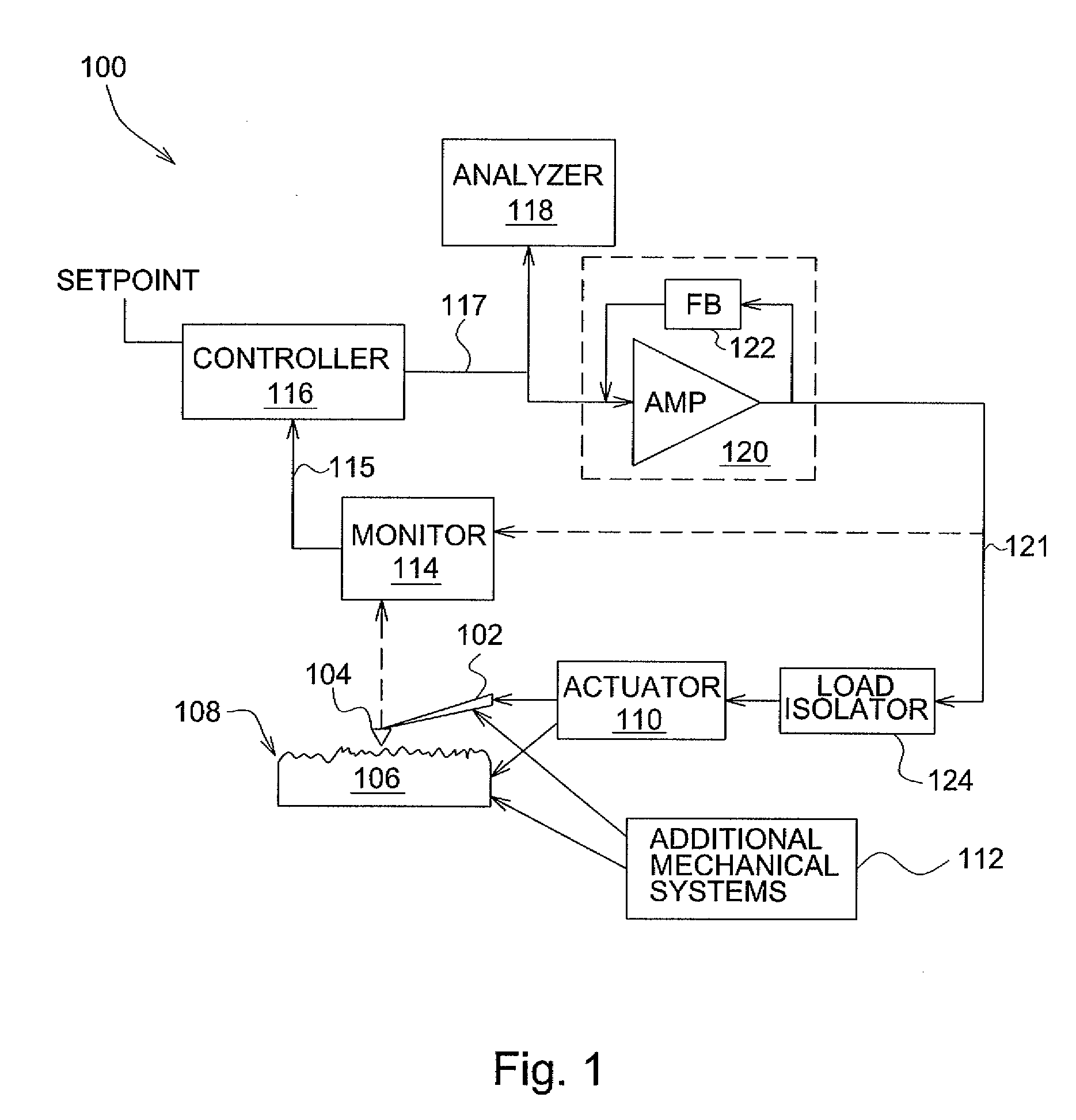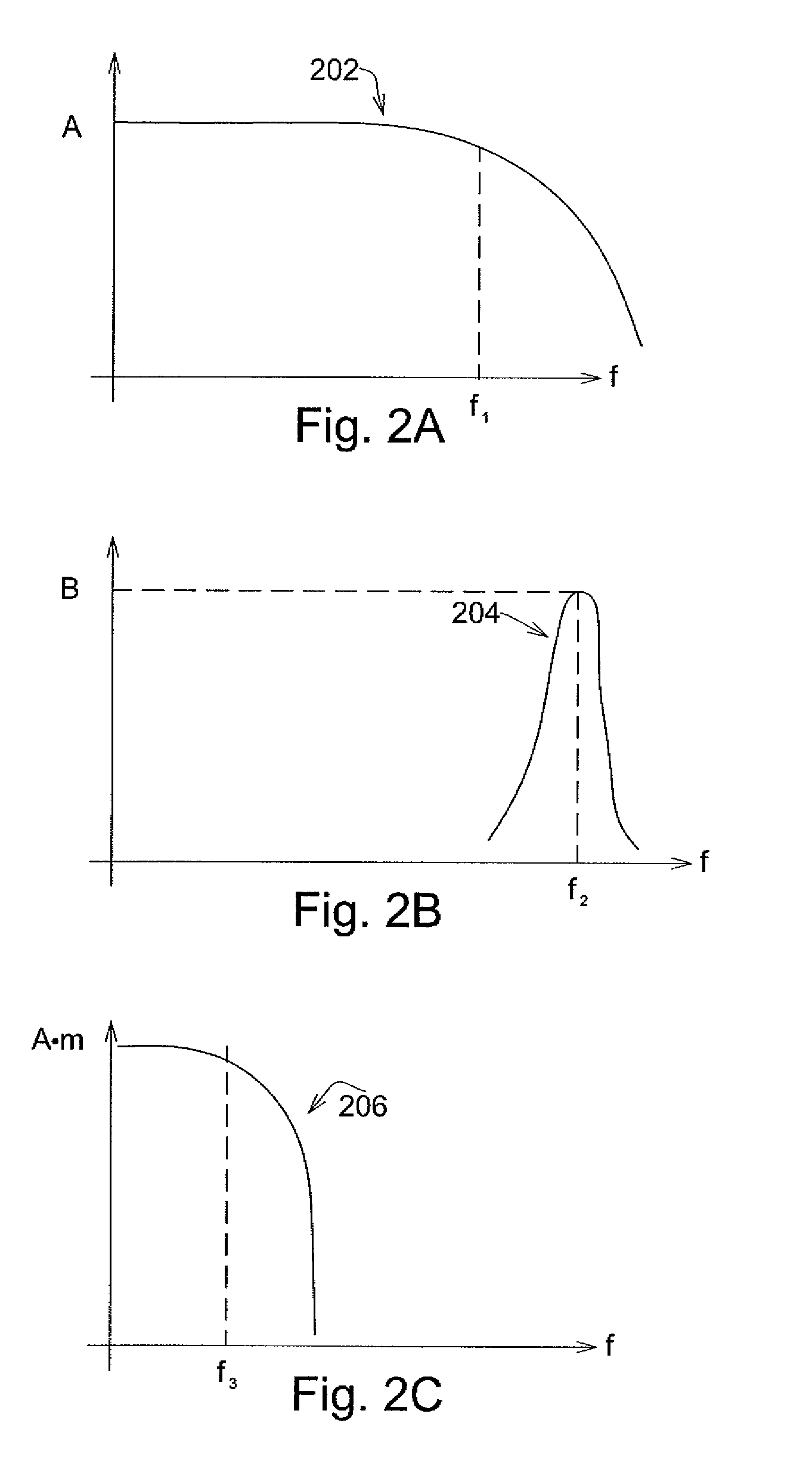High-bandwidth actuator drive for scanning probe microscopy
a high-bandwidth, actuator technology, applied in the direction of material analysis using wave/particle radiation, instruments, nuclear engineering, etc., can solve the problems of signal amplifier, amplifier gain, and restrict the ability of amplifiers to drive actuators
- Summary
- Abstract
- Description
- Claims
- Application Information
AI Technical Summary
Benefits of technology
Problems solved by technology
Method used
Image
Examples
Embodiment Construction
[0039]FIG. 1 is a top-level diagram illustrating a portion of a typical SPM system 100. System 100 includes cantilever 102 that holds probe 104. Probe 104 is used to inspect sample 106 having surface 108. Surface 108 has a certain topography, which is the subject of the inspection in certain applications. More generally, for samples that do not have major surfaces defined by corresponding aspect ratios, the topography of the sample can similarly be inspected by the SPM. The term topography is defined herein as a representation of a three-dimensional profile of a sample or of a portion of a sample, including, but not limited to, surface features of a sample.
[0040]The inspection is accomplished by situating probe 104 relatively to surface 108 by moving either cantilever 102, sample 106, or both, in order to establish a detectable interaction between surface 108 and probe 104. Probe 104 is scanned over or across the sample while probe 104 tracks the topography of sample 106, such as, f...
PUM
 Login to View More
Login to View More Abstract
Description
Claims
Application Information
 Login to View More
Login to View More - R&D
- Intellectual Property
- Life Sciences
- Materials
- Tech Scout
- Unparalleled Data Quality
- Higher Quality Content
- 60% Fewer Hallucinations
Browse by: Latest US Patents, China's latest patents, Technical Efficacy Thesaurus, Application Domain, Technology Topic, Popular Technical Reports.
© 2025 PatSnap. All rights reserved.Legal|Privacy policy|Modern Slavery Act Transparency Statement|Sitemap|About US| Contact US: help@patsnap.com



